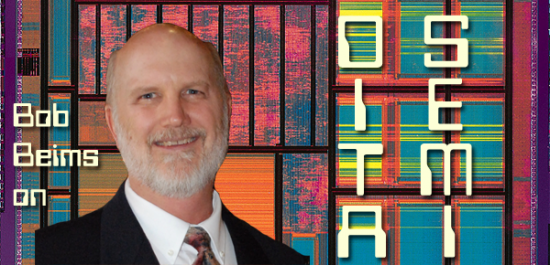
One of the more active OASIS DITA Technical Subcommittees (TC) is that lead by a coalition of semiconductor firms seeking to extend DITA to cover the specific needs of this industry segment. Recent developments at OASIS strongly hint that this additional, separate DITA specialization will become officially available when DITA 1.3 is released.
As I have contacts with a number of people in this industry (having previously worked in it myself) I decided to send several questions to people on their reactions on the upcoming specialization and what their general experiences with DITA have been. The responses I received will appear in a series of posts on this site over the course of the week.
Bob Beims has long been one of the main drivers of the semiconductor specialization at OASIS. He is the Information Development Program Manager at Freescale Semiconductor. He’s been there for over 10 years and prior to that almost 15 years within the Semiconductor division at Motorola. He pushed for the adoption of a DITA-based platform within Freescale, which he says reduced cycle time, increased quality, and improved customer satisfaction with their documentation. In his “spare” time he works with several cross-functional teams within Freescale to improve business processes in addition to chairing the OASIS Semiconductor TC.
Here are his responses to my questions about DITA and his own experiences in the semiconductor industry:
DITA Writer: From a semiconductor industry perspective, what are the chief benefits of using DITA?
Bob Beims The chief benefits of DITA for semiconductor companies are obviously similar to other tech industries at large: proven topic-based approaches to information development help customer understanding, and DITA enables topic-based authoring on large scales. But beyond that, the benefits that are specific to semiconductor companies were outlined in my CIDM BP article (Volume 13, Issue 6 – Dec. 2011) and later recognized in our being awarded the 2012 Rare Bird Award: integrating product development and information development via XML-enabled data flows. The staggeringly large scale of the effort required to define, develop and document today’s SoCs is simply untenable without such automation (in my opinion, based on 32 years in the industry).
DITA Writer: Are you looking to implement the DITA Semiconductor specialization when it is released alongside DITA 1.3?
Bob Beims Yes. Of course, we intend to be at the forefront of that effort. (BTW, the current plan is to make the semiconductor specializations a profile of the DITA spec, rather than a part of the DITA 1.3 spec itself.) After discussions with the DITA Technical Committee, the Semiconductor Committee (SC) decided that the best course of action was to “decouple” the Semiconductor Information Design SC specialization body of work from the DITA 1.3 corpus. This will give the give the SC more flexibility in scheduling updates to the specification. It also helps the DITA TC from charges that DITA is getting “too complicated”, as the specialization is entirely optional.
The downside for the SC is that we can’t “ride the coat tails” of the TC in order to get the SIDSC work ratified. So we’ll have to garner “yes” votes from at least 50% of 15% of the OASIS voting membership… knowing full well that only a few OASIS member companies will have any knowledge of semiconductor information development issues that are solved by SIDSC.
DITA Writer: Have you had the opportunity to import DITA XML from a firm you do business with?
Bob Beims Not yet, as we’ve yet to find one that has reach a level of maturity where we could pilot such an effort. But hopefully we’re getting close!
DITA Writer: Not all semiconductor firms have taken on DITA. Why do you think that is?
Bob Beims Because it presents such a radical departure from legacy methods. After 5 years of proven success and maturity at Freescale, I’m still fighting adoption battles here and there. “I want my FrameMaker back!” continues to be heard frequently from the non-ID community with whom we must integrate workflows. By and large, the semiconductor industry ignored the complexities of robust end-to-end information development for decades while climbing up the Moore’s Law device curve. Now that we’re producing such massively complex devices with shorter and shorter design cycle times, that inattention to such a critical workflow is really causing problems for customers. So it is now time to pay the piper!
DITA Writer: What is your best experience using DITA? What is your worst experience using DITA?
Bob Beims Hmmm…
Best: outlined in the CIDM article (significant cycle time reductions for non-ID workflows due to XML-based ID workflows).
Worst: staying ahead of the adoption curve without sufficient funding to meet the needs of all end users (we’ve focused 95% of our investment on content management, publishing and delivery and somewhat “ignored” authoring tools usability; and we’ve focused primarily on the needs of the ID community… which is coming back to bite us now as we attempt to get late-adopters from outside of the ID community to join the party).

2 thoughts on “Bob Beims on DITA Use in the Semiconductor Industry”
Comments are closed.